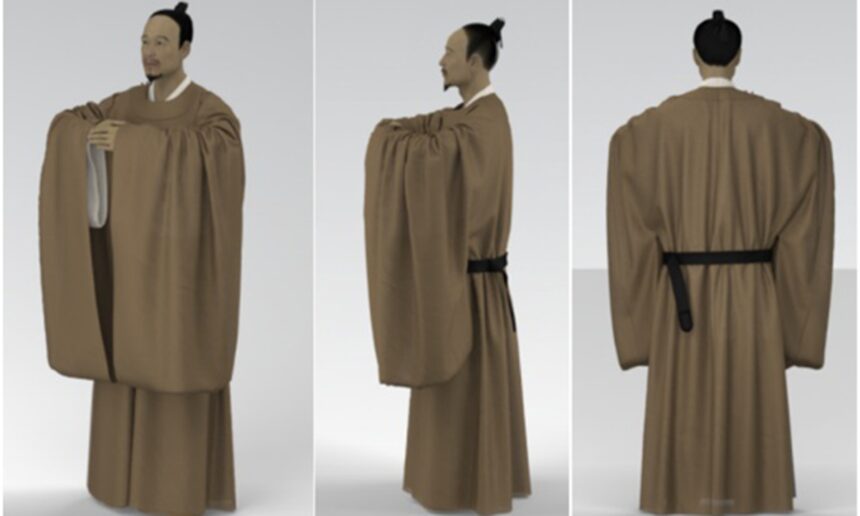A groundbreaking digital recreation of South Song Dynasty (960-1127) male attire was unveiled by the Zhejiang Provincial Innovation Center of Advanced Textile Technology in Shaoxing, Zhejiang Province. This project, featuring a digital figure named Zhao Boyun adorned in a glossy gauze robe with a lotus pattern, represents the most complete restoration of its kind, according to experts.
The digital figure and attire are based on images discovered in Zhao Boyun’s tomb, with materials provided by the Huangyan Museum in Taizhou, Zhejiang. Qian Diqing, a core member of the digital fashion team and lecturer at Zhejiang Sci-Tech University, emphasized the project’s significance. “This is the most comprehensive and representative male attire restoration. Its textile technique is also complete,” Qian stated.
The team restored six silk fabric cultural relics unearthed from Zhao’s tomb, showcasing the exquisite weaving craftsmanship of the Song Dynasty. Using digital media and 3D graphic image technology, the team reimagined clothing patterns, fabric structures, and styles, bringing the ancient attire to life on a virtual figure.
“Restoring clothing is more difficult than other cultural relics,” Qian explained. Unlike rigid bodies such as utensils and curiosities, fabric is flexible and easily damaged, making its shape challenging to maintain.
Zhao Anru, an employee with the Huangyan Museum, highlighted the importance of digital restoration in protecting cultural relics. “Museum visitors can appreciate the charm of the cultural relics in an all-round way through 3D simulation and restoration results,” Zhao said.
Qi Dongming, vice director of the center, noted that the digital restoration of clothing relics has sparked new creativity in the textile industry. “Through new technologies and new business models, digital restoration for clothing relics is expected to lead the next disruption in the textile sector,” Qi stated.
Looking ahead, Qian revealed plans to produce more 3D dynamic presentations illustrating Zhao Boyun’s life and work. An online museum focusing on the South Song Dynasty may also be launched. The restored textile patterns, materials, and graphics could be repurposed in various generative designs, adding a modern twist to ancient traditions.
This digital restoration not only preserves historical craftsmanship but also opens new avenues for innovation in the textile industry, blending tradition with technology.

